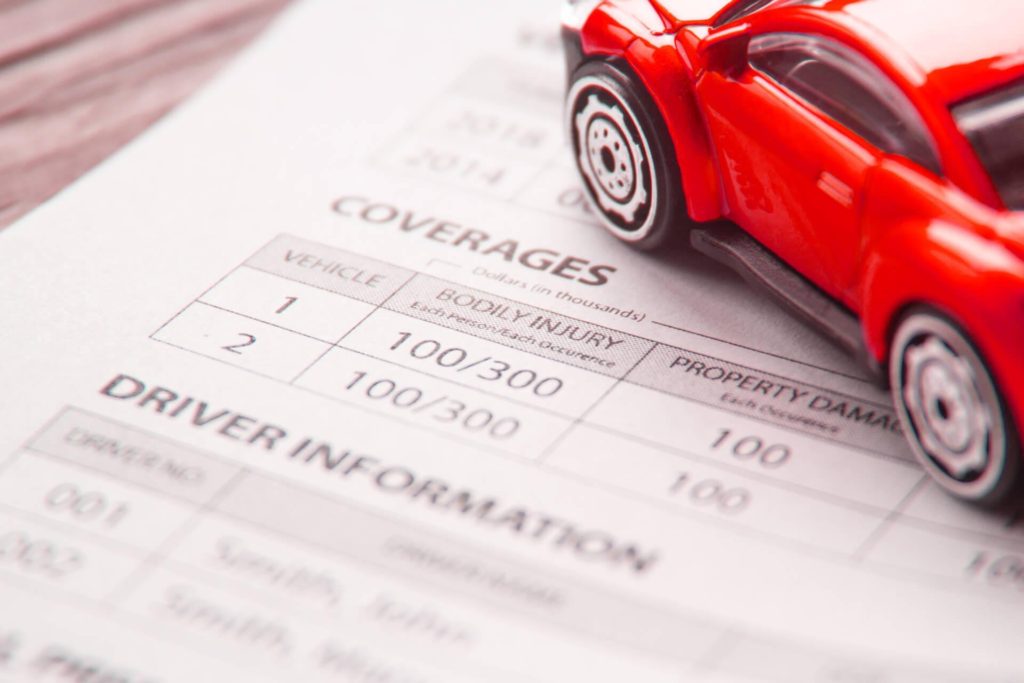Understanding Autonomous Vehicles and Their Influence on Auto Insurance
Autonomous vehicles, commonly known as self-driving cars, are a revolutionary advancement in the automotive industry. These vehicles leverage state-of-the-art technology to navigate and operate without human intervention. Understanding the impact of autonomous vehicles on auto insurance entails delving into their definition, legal framework, and adoption trends.
What Are Autonomous Vehicles?
Autonomous vehicles incorporate advanced technologies such as sensors, AI algorithms, and connectivity to perceive their environment and maneuver without human input. They are categorized into different levels based on the degree of autonomy, ranging from driver assistance features to fully autonomous capabilities.
The evolution and current status of autonomous vehicle technology indicate ongoing advancements in safety systems, communication protocols, and vehicle-to-everything (V2X) connectivity, shaping the landscape for auto insurance.
Legal and Regulatory Framework
The emergence of autonomous vehicles has prompted the establishment of laws and regulations to govern their operation. Understanding the legal and regulatory framework governing autonomous vehicles is crucial for assessing insurance requirements, liability, and coverage considerations.
The impact of regulations on insurance requirements for autonomous vehicles is a key facet shaping the insurance landscape, influencing coverage mandates and liability assignments.
Autonomous Vehicle Adoption Trends
Global statistics on the adoption of autonomous vehicles reveal an increasing trend, driven by factors such as safety improvements, enhanced mobility solutions, and environmental considerations. Analyzing the adoption trends provides insights into the growing influence of autonomous vehicles on auto insurance practices and risk assessment methodologies.
The dynamics of autonomous vehicle adoption and the associated implications for auto insurance lay the foundation for comprehending the evolving insurance landscape. Now, let’s delve into the changing dynamics of auto insurance due to autonomous vehicles.
In the next section, we will explore the impact of autonomous vehicles on accident rates, liability shifts, and data-centric telematics in the realm of auto insurance. Understandably, the changing dynamics pose unique challenges and opportunities for insurers.
The Changing Dynamics of Auto Insurance Due to Autonomous Vehicles
The increasing integration of autonomous vehicles into the transportation network necessitates a comprehensive evaluation of their impact on auto insurance dynamics.
A. Impact on Accident Rates and Severity
Analyzing the accident rates between autonomous and traditional vehicles provides insights into the safety implications of autonomous technology. Understanding the severity and nature of accidents involving autonomous vehicles enables the assessment of risk exposure and the development of tailored insurance solutions.
The data-driven analysis of accidents involving autonomous vehicles allows for a nuanced understanding of risk factors and their implications for insurance underwriting and claims management.
B. Shift in Liability and Coverage Needs
The shift in liability from human drivers to vehicle manufacturers or software developers signifies a fundamental change in the insurance landscape. This necessitates a review of new insurance coverage options tailored for autonomous vehicles, addressing liability concerns and ensuring comprehensive protection in the evolving mobility ecosystem.
The evolving liability and coverage needs mandate a proactive approach from insurance providers to align their offerings with the shifting paradigm of autonomous vehicle technology.
C. Data and Telematics
The utilization of vehicle data and telematics for risk assessment and pricing introduces data-centric underwriting and claims handling practices. Understanding the role of data in evaluating risks associated with autonomous vehicles is integral to refining insurance products and enhancing risk management strategies.
The incorporation of data and telematics presents opportunities for insurance companies to align their offerings with the advanced technologies embedded in autonomous vehicles, fostering a more dynamic and responsive insurance environment.
The evolving dynamics arising from autonomous vehicles necessitate proactive responses from insurance companies. Next, we will delve into the strategies and adaptations undertaken by insurance providers to navigate the impact of autonomous vehicles. Understanding their response and adaptation is pivotal in comprehending the evolving insurance landscape in the era of autonomous vehicles.
In the upcoming section, we will explore how insurance companies are innovating and customizing their products to address the unique risks associated with autonomous technology. Additionally, we will delve into the changes in underwriting criteria and the collaborative ventures shaping the insurance domain.
Insurance Companies’ Response and Adaptation to Autonomous Vehicles
As autonomous vehicles reshape the transportation landscape, insurance companies are strategically responding to the emerging challenges and opportunities presented by this paradigm shift.
A. Product Innovation and Customization
The development of specialized insurance products tailored for autonomous vehicles is a key strategy employed by insurance companies to address the unique risks associated with this evolving technology. By customizing coverage options and aligning them with the specific characteristics and risk profiles of autonomous vehicles, insurers can offer comprehensive protection tailored to the distinct needs of autonomous vehicle owners and stakeholders.
The innovation and customization of insurance products cater to the distinctive requirements of autonomous technology, fostering an environment that supports the safe integration of these vehicles into the transportation ecosystem.
B. Underwriting and Risk Management
The evolution of underwriting criteria and risk assessment methodologies is essential for insurance companies to effectively navigate the uncertainties and evolving risk parameters associated with autonomous vehicles. Adapting to the changing risk landscape requires advanced data analytics, predictive modeling, and scenario-based risk assessments to ensure that insurance offerings accurately reflect the complexities of insuring autonomous technology.
By proactively managing uncertainties and refining risk parameters, insurers can optimize their underwriting processes, enhancing their capacity to evaluate and effectively manage the risks inherent to autonomous vehicles.
C. Partnership and Collaboration
Collaborations between insurance companies and autonomous vehicle manufacturers, as well as partnerships with technology firms, are pivotal in fostering a synergistic approach to addressing the insurance implications of autonomous vehicles. Through these collaborations, insurers can gain valuable insights into the technological aspects of autonomous vehicles, co-create innovative insurance solutions, and establish new business models that align with the rapidly evolving mobility ecosystem.
The strategic partnerships and collaborative ventures between insurance entities and industry stakeholders play a pivotal role in shaping the insurance landscape for autonomous vehicles, fostering a dynamic and responsive environment that caters to the unique needs of this evolving industry.
In the subsequent segment, we will explore the future outlook and considerations for auto insurance in the era of autonomous vehicles, encompassing predictions for insurance rates, policy developments, and the importance of consumer education and awareness. Understanding the future implications is vital for navigating the evolving landscape of auto insurance in light of autonomous advancements.
In the following section, we will delve into the future outlook and considerations for auto insurance in the era of autonomous vehicles, providing insights into the anticipated changes in insurance-related policies and regulations, and the importance of consumer education in the transformative era of autonomous vehicles.
Future Outlook and Considerations for Auto Insurance in the Era of Autonomous Vehicles
The disruptive impact of autonomous vehicles on the auto insurance industry necessitates a forward-looking approach to anticipate and address the evolving dynamics and challenges. Key considerations and predictions shape the trajectory of auto insurance in the transformative era of autonomous vehicles.
A. Predictions for Auto Insurance Rates
Speculating on the trajectory of auto insurance premium rates amidst the proliferation of autonomous vehicles entails considering factors such as safety advancements, technological complexities, and the shifting nature of risk exposure. Predicting the future pricing of auto insurance requires a comprehensive analysis of the interplay between technological advancements and risk profiles associated with autonomous vehicles.
The anticipated changes in insurance-related policies and regulations are pivotal in shaping the insurance landscape for autonomous vehicles. The role of governments and regulatory bodies in crafting and adapting policies profoundly influences the insurance environment, reflecting the unique needs, challenges, and opportunities presented by the integration of autonomous technology.
C. Consumer Education and Awareness
Educating consumers about the insurance implications of autonomous vehicles is paramount in promoting understanding of coverage options and implications for individuals and businesses. As autonomous vehicles become more prevalent, fostering consumer awareness about the evolving insurance landscape empowers individuals to make informed decisions regarding coverage, liability, and risk management in the context of autonomous vehicle technology.
The future outlook for auto insurance in the era of autonomous vehicles is shaped by multifaceted considerations, ranging from predictive pricing models and regulatory adaptations to consumer education initiatives.
In conclusion, the transformative influence of autonomous vehicles on auto insurance necessitates a proactive and adaptive approach from industry stakeholders. Understanding the nuances of autonomous technology, anticipating future developments, and aligning insurance practices with the unique characteristics of autonomous vehicles are imperative for establishing a resilient and responsive insurance landscape.
In recap, the comprehensive exploration of autonomous vehicles’ influence on auto insurance encompasses understanding their definition and technological evolution, the changing dynamics of insurance due to autonomous vehicles, insurance companies’ responses and adaptation, and the future outlook for auto insurance. Navigating this transformative landscape requires a forward-looking, collaborative, and consumer-focused approach to ensure the seamless integration of autonomous vehicles into the insurance ecosystem.
In this comprehensive article, we have delved into the multifaceted impact of autonomous vehicles on auto insurance, providing insights into the evolving dynamics, strategic responses, and future considerations that shape the insurance landscape in the transformative era of autonomous vehicles.
%%ai_text_7%%
The Impact of Autonomous Vehicles on Auto Insurance
As autonomous vehicles revolutionize the automotive landscape, their influence on auto insurance is profound and far-reaching.
I. Understanding Autonomous Vehicles and Their Influence on Auto Insurance
Autonomous vehicles, defined by their advanced technological capabilities, are driving significant shifts in the insurance sector. Understanding the legal and regulatory framework governing autonomous vehicles, along with the global trends in their adoption, provides crucial insights into the insurance implications of this transformative technology.
II. The Changing Dynamics of Auto Insurance Due to Autonomous Vehicles
The increasing prevalence of autonomous vehicles has led to a reevaluation of accident rates, liability, and coverage needs. The comparison of accident rates between autonomous and traditional vehicles, the associated changes in liability, and the utilization of vehicle data for risk assessment are reshaping the dynamics of auto insurance.
III. Insurance Companies’ Response and Adaptation to Autonomous Vehicles
Insurance providers are adapting to the emergence of autonomous vehicles through product innovation, customized coverage options, and the recalibration of underwriting and risk management methodologies. Collaborations with vehicle manufacturers and technology firms are fostering new business models to address the unique risks posed by autonomous technology.
IV. Future Outlook and Considerations for Auto Insurance in the Era of Autonomous Vehicles
Anticipating the trajectory of auto insurance premium rates, analyzing influencing factors, and understanding the anticipated changes in insurance-related policies and regulations are central to shaping the future of auto insurance in the era of autonomous vehicles. Educating consumers about the insurance implications of autonomous vehicles and promoting understanding of coverage options are integral components of navigating this transformative landscape.
In conclusion, the influence of autonomous vehicles on auto insurance is multidimensional, representing both challenges and opportunities for insurers and consumers alike. As the automotive industry continues to evolve, proactive adaptation and a comprehensive understanding of the implications are essential for navigating the future of auto insurance in the era of autonomous vehicles.
Embrace the future of auto insurance in the era of autonomous vehicles. Stay informed, adapt, and explore the evolving landscape to ensure comprehensive coverage and protection in this transformative era.







